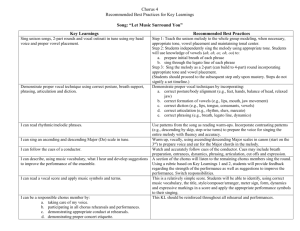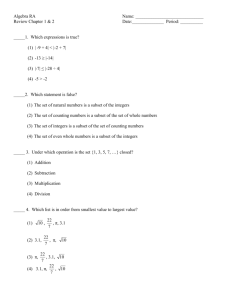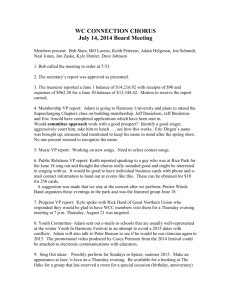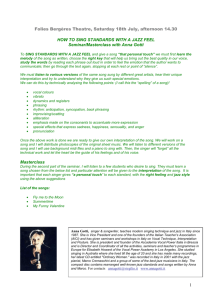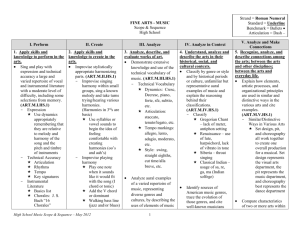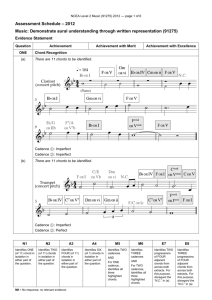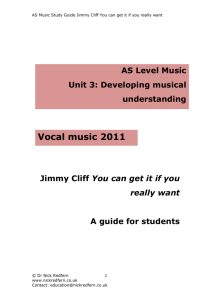Chorus 5 Recommended Best Practices for Key Learnings Song
advertisement
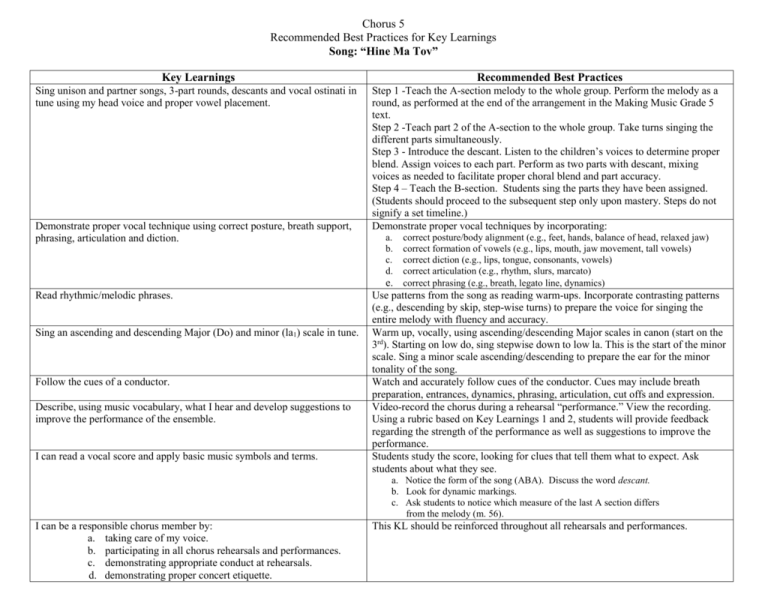
Chorus 5 Recommended Best Practices for Key Learnings Song: “Hine Ma Tov” Key Learnings Sing unison and partner songs, 3-part rounds, descants and vocal ostinati in tune using my head voice and proper vowel placement. Demonstrate proper vocal technique using correct posture, breath support, phrasing, articulation and diction. Read rhythmic/melodic phrases. Sing an ascending and descending Major (Do) and minor (la1) scale in tune. Follow the cues of a conductor. Describe, using music vocabulary, what I hear and develop suggestions to improve the performance of the ensemble. I can read a vocal score and apply basic music symbols and terms. Recommended Best Practices Step 1 -Teach the A-section melody to the whole group. Perform the melody as a round, as performed at the end of the arrangement in the Making Music Grade 5 text. Step 2 -Teach part 2 of the A-section to the whole group. Take turns singing the different parts simultaneously. Step 3 - Introduce the descant. Listen to the children’s voices to determine proper blend. Assign voices to each part. Perform as two parts with descant, mixing voices as needed to facilitate proper choral blend and part accuracy. Step 4 – Teach the B-section. Students sing the parts they have been assigned. (Students should proceed to the subsequent step only upon mastery. Steps do not signify a set timeline.) Demonstrate proper vocal techniques by incorporating: a. b. c. d. correct posture/body alignment (e.g., feet, hands, balance of head, relaxed jaw) correct formation of vowels (e.g., lips, mouth, jaw movement, tall vowels) correct diction (e.g., lips, tongue, consonants, vowels) correct articulation (e.g., rhythm, slurs, marcato) correct phrasing (e.g., breath, legato line, dynamics) e. Use patterns from the song as reading warm-ups. Incorporate contrasting patterns (e.g., descending by skip, step-wise turns) to prepare the voice for singing the entire melody with fluency and accuracy. Warm up, vocally, using ascending/descending Major scales in canon (start on the 3rd). Starting on low do, sing stepwise down to low la. This is the start of the minor scale. Sing a minor scale ascending/descending to prepare the ear for the minor tonality of the song. Watch and accurately follow cues of the conductor. Cues may include breath preparation, entrances, dynamics, phrasing, articulation, cut offs and expression. Video-record the chorus during a rehearsal “performance.” View the recording. Using a rubric based on Key Learnings 1 and 2, students will provide feedback regarding the strength of the performance as well as suggestions to improve the performance. Students study the score, looking for clues that tell them what to expect. Ask students about what they see. a. Notice the form of the song (ABA). Discuss the word descant. b. Look for dynamic markings. c. Ask students to notice which measure of the last A section differs from the melody (m. 56). I can be a responsible chorus member by: a. taking care of my voice. b. participating in all chorus rehearsals and performances. c. demonstrating appropriate conduct at rehearsals. d. demonstrating proper concert etiquette. This KL should be reinforced throughout all rehearsals and performances.
